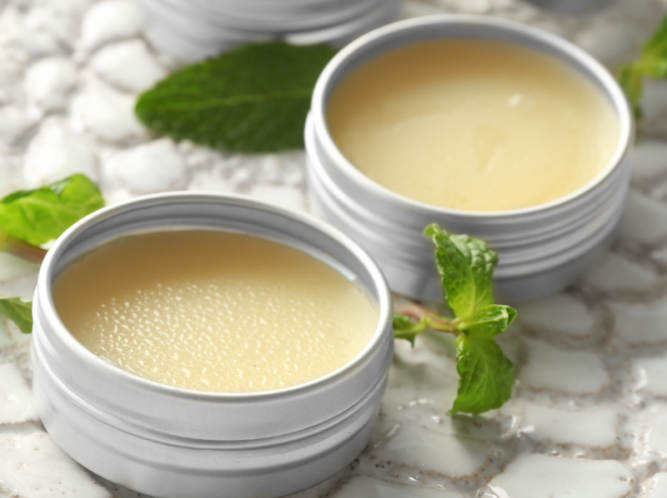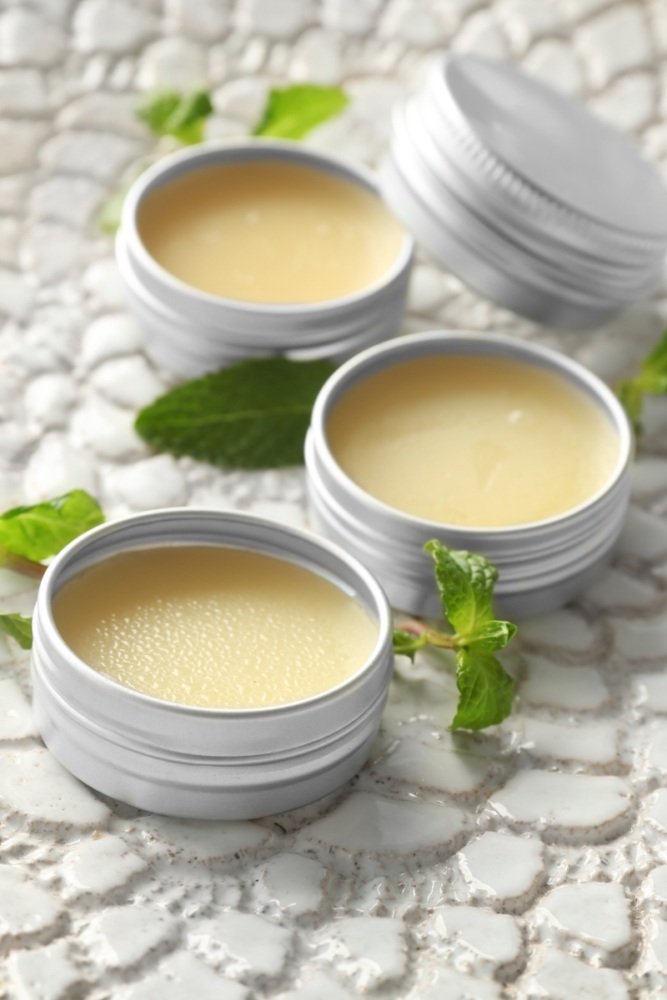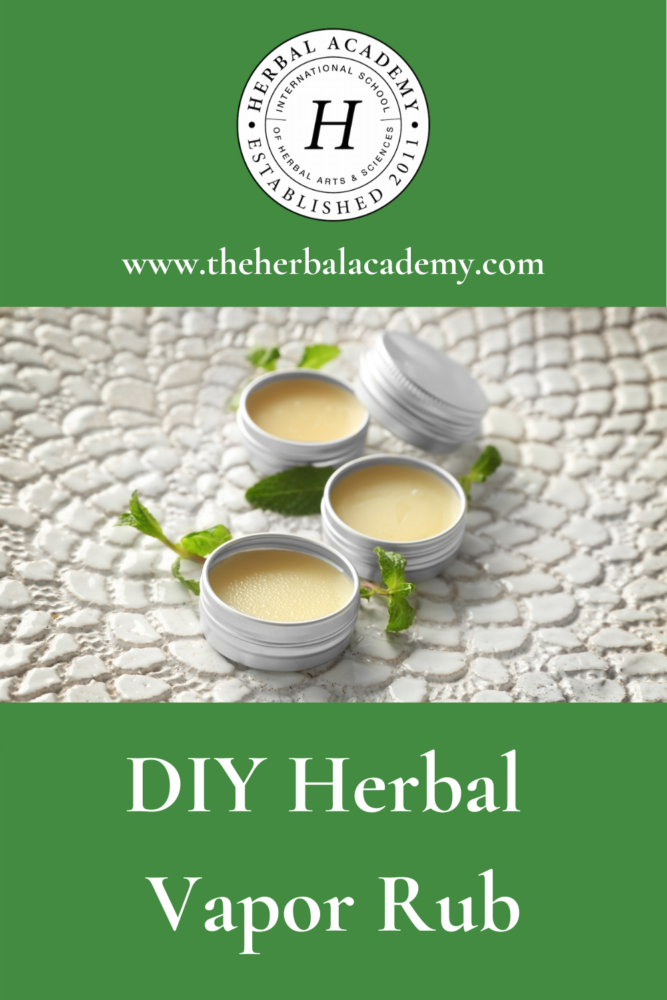
DIY Herbal Vapor Rub
Making your own herbal vapor rub is a great way to use your essential oil collection while creating a natural alternative to mass-produced mentholated rubs.
This recipe features eucalyptus (Eucalyptus globulus) essential oil. This invigorating oil is steam distilled from the leaves of the evergreen tree, which is native to Australia and well-known for its menthol aroma. Eucalyptus contains eucalyptol, a compound with antibacterial and antiviral properties (Wong, 2020). Traditionally used in compounds that treat respiratory symptoms, including commercial mentholated chest rubs, eucalyptus has also been found in some studies to aid in wound healing and promote oral health (Wong, 2020).
Peppermint (Mentha x piperita) essential oil comes from the steam distilled leaves of the peppermint plant and is considered a natural decongestant because it contains menthol (McDermott, 2019). Also thought to have antiviral and antibacterial properties, peppermint is traditionally used in treating coughs and colds, congestion, and digestive issues (Dresden, 2020).
Together, eucalyptus and peppermint provide a powerhouse of herbal goodness and assertive aromas, making them an ideal duo for this herbal vapor rub.

DIY Herbal Vapor Rub
This botanical vapor rub is reminiscent of its commercial counterparts but is made of simple, natural ingredients and is petroleum-free. Yield: one 2 ounce tin.
8 ounces organic almond oil
1 ounces beeswax
10 drops organic eucalyptus (Eucalyptus globulus) essential oil
10 drops organic peppermint (Mentha x piperita) essential oil
- Using the double boiler method, place beeswax and almond oil together over medium-high heat until both ingredients melt together. I find that a glass measuring cup placed inside a larger saucepan full of water works well as a DIY double boiler.
- Remove the beeswax oil mixture from the stovetop and add the essential oils.
- Immediately pour the mixture into small (1-2 ounce) metal tins.
- Let cool completely before capping the tins.
- Use in cases of cough and congestion. Rub into the chest area and breathe deeply.
Caution: Peppermint and eucalyptus essential oils should not be used on children ages 3 and under, as these essential oils can slow respiration. With children 3-years and older, Eucalyptus radiata essential oil can be used topically up to 1% and peppermint essential oil can be used up to 0.5%. Be sure to keep all essential oil products away from the eyes. Also, those with asthma may have a negative reaction to these essential oils. If you have asthma, it is best to test how you respond to peppermint and eucalyptus essential oils before using them in larger amounts. If you find that your lungs and air passages close or tighten in response, other choices such as cedarwood and Roman chamomile may be substituted (Siegmund-Roach, 2015).
For more on essential oil safety, read A Guide to Essential Oil Safety.

REFERENCES
Dresden, D. (2020). What are the benefits of peppermint oil? [Online article]. Retrieved from https://www.medicalnewstoday.com/articles/peppermint-oil-benefits
Kent-Stoll, G. (2019). Herbal travel essentials for the adventurous traveler [Blog post]. Retrieved from https://theherbalacademy.com/herbal-travel-essentials/
McDermott, A. (2019). Can essential oils treat or prevent colds? [Online article]. Retrieved from https://www.healthline.com/health/cold-flu/essential-oils-for-colds
Mountain Rose Herbs. (2017). A little book of our favorite recipes. Retrieved from Mountain Rose Herbs.
Wong, C. (2020). The health benefits of eucalyptus oil [Online article]. Retrieved from https://www.verywellhealth.com/steam-inhalation-with-eucalyptus-essential-oil-88169








